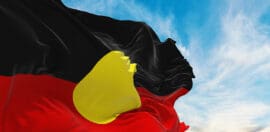Close the data gap

18 March 2021 at 6:30 am
If we really want to drive change, especially in an area as nuanced as Indigenous employment, we need data, writes Shelley Cable, CEO of Generation One.
What if I told you that no one knows how many Indigenous Australians are currently employed?
You might be surprised, and rightly so. After all, we have data for everything nowadays. We’re regularly told how much money we spend at the Boxing Day sales, what we like to order from UberEATS, and what the most popular baby names are every year.
So how could it be, in 2021, that no one knows how many Indigenous Australians woke up this morning and went to work?
Generation One, an initiative of Minderoo Foundation, recently commissioned Deloitte Access Economics to undertake an economic analysis to identify the impacts of COVID-19 on the employment of Indigenous Australians.
Previous research suggested that marginalised populations, including Indigenous peoples, were more sensitive to economic shocks, such as a pandemic. While we expected the COVID-19 impact figures to be bad, what we didn’t expect was no figures at all.
“The true impacts of the pandemic on Indigenous employment are still not known,” the report states. “The lack of representative, meaningful and timely data on Indigenous Australians’ employment status and experience is a material barrier to undertaking the required analysis.”
The invisibility of Indigenous Australians within the labour force did not start with the COVID-19 pandemic. In fact, the last time a comprehensive picture was built on the Indigenous workforce was during the 2016 Census.
As a result, today, it is unknown how many Indigenous Australians are at risk of losing their jobs when JobKeeper phases out on 31 March. We could be staring at the single biggest blow to Indigenous employment since Closing the Gap began, and not even know it.
Today, on National Close the Gap Day, I ask: How can we meaningfully work towards closing the employment gap if we don’t even know how big it is?
If we really want to drive change, especially in an area as nuanced as Indigenous employment, we need the best information at our fingertips, to make the best decisions and the smartest investments with our limited resources and time.
The 2020 Closing the Gap report estimated, using data from years earlier, that the employment gap had closed only 1.3 per cent in an entire decade. With the suspected impacts of the COVID-19 pandemic on the Indigenous workforce over the past 12 months, Deloitte estimates that even this meagre progress has been sent backwards by years.
Our mission at Generation One is to create employment parity with and for Indigenous Australians, within one generation. We know that better data is critical to this mission.
To this end, we are calling on every Australian workplace to understand and report on the state of Indigenous employment in their own organisations.
Data collection is a critical step to closing the employment gap faster.
Of course, sourcing and reporting this data will take time. On the gender front, it took years for workplaces in Australia to begin capturing and reporting annually on gendered employment data. The establishment of the Workplace Gender Equality Agency (WGEA) and supporting legislation has ensured this reporting remains business as usual.
An equivalent model for Indigenous employment would produce similar transparency, accountability and momentum.
There is no good reason that Indigenous Australians, with the longest history of hard work and economic participation anywhere in the world, should be excluded from today’s labour force. There’s certainly no reason this exclusion needs to continue for the next 200 years.
To the contrary, there are myriad reasons for employing Indigenous Australians and realising the associated economic, social and cultural benefits that come with respecting, including and working with the world’s oldest living civilisation.
Indigenous employment is not just the right thing to do, it’s the smart thing to do.
The fact that we don’t collect regular Indigenous employment data implies we don’t care and we don’t want to change. Based on the leaders I work with across corporate Australia, governments and communities, I know this is simply not the case.
Data drives our economy. It drives our lives.
If you can measure it, you can manage it.
Whether you’re a business leader, an Indigenous employee, or the government – let’s close this data gap with speed so we can close the employment gap faster.







